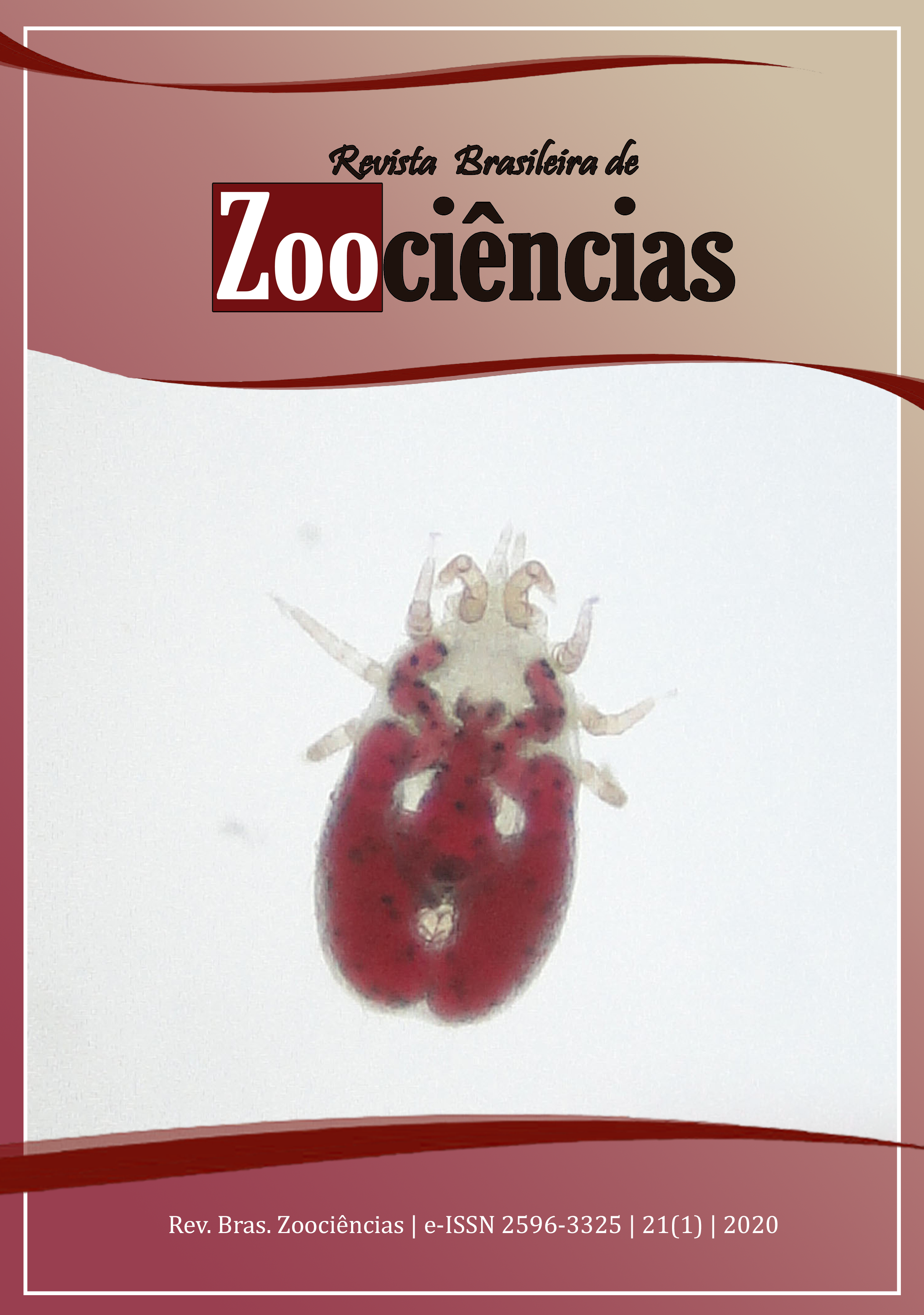Digenetic helminths of Leptodactylus latrans (Anura: Leptodactylidae) and Rhinella dorbignyi (Anura: Bufonidae) in southern Brazil
DOI:
https://doi.org/10.34019/2596-3325.2020.v21.27890Palavras-chave:
Derogenidae, Diplodiscidae, Diplostomidae, Gorgoderidae, Haematoloechidae, PlagiorchioideaeResumo
Even though anurans have been hosts to an array of helminths, data on the helminth fauna of anurans in Brazil are scarce. This study aims at reporting digenetic helminths on Leptodactylus latrans (Steffen, 1815) and Rhinella dorbignyi (Duméril & Bibron, 1841) in southern of Brazil. Sixty specimens of anurans L. latrans (n= 30) and R. dorbignyi (n= 30) were collected between August 2017 and August 2018. Then, necropsy was performed and helminths were collected, fixed and dyed to be identified in agreement with specific bibliography. Estimated infection indices were prevalence (P%), mean intensity of infection (MII) and mean abundance (MA). Twenty-eight anurans (46.66%) exhibited digenetic helminths, totalizing 255 parasite specimens. Leptodactylus latrans was infected with Gorgoderina megacysta Mañé-Garzón & González, 1978 (Gorgoderidae) (P = 40%), Haematoloechus freitasi Mané Garzón & Solares, 1959 (Haematoloechidae) (P = 23.33%), Catadiscus spp. (Diplodiscidae) (P = 30%), Plagiorchioideae fam. gen. spp. (P = 63.33%) and Halipegus sp. (Derogenidae) (P = 3.33%), whereas R. dorbignyi was infected with Gorgoderina sp. (P = 3.33%), Haematoloechus sp. (P = 3.33%), Catadiscus sp. (P = 3.33%), Plagiorchioideae fam. gen. sp. (P = 3.33%) and Diplostomidae gen. spp. (metacercariae) (P = 6.66%).



